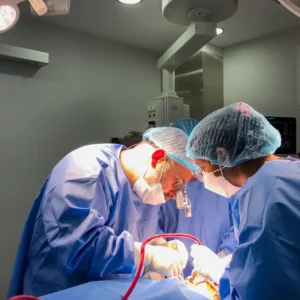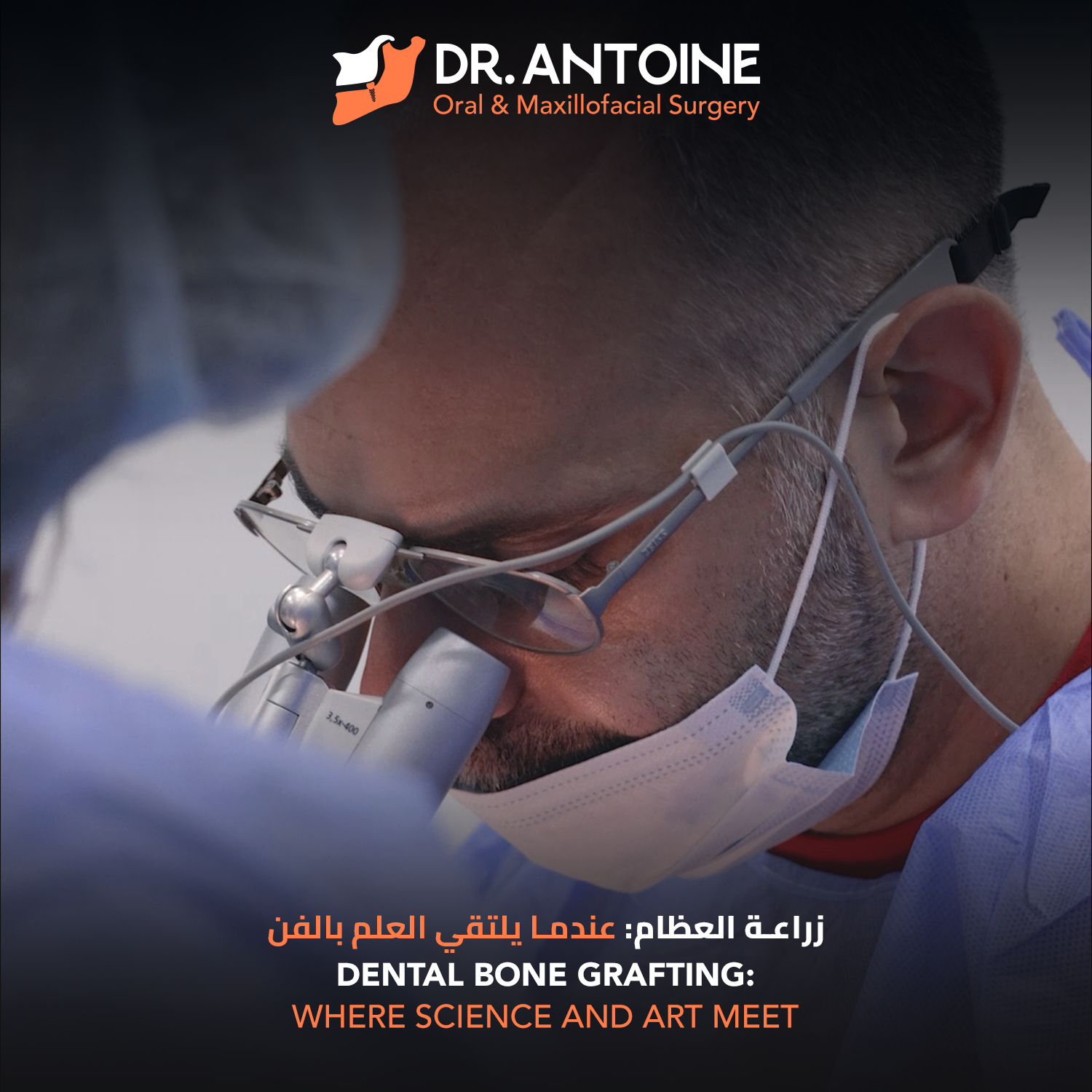Orthognathic surgery, also known as corrective jaw surgery, is a specialized procedure that involves the surgical correction of jaw misalignments to improve both function and appearance. This type of surgery is often necessary when repositioning teeth and jaws cannot be achieved through orthodontics alone. Whether it’s to correct a bite, reconstruct teeth and jaws, or enhance facial aesthetics, orthognathic surgery plays a vital role in restoring a balanced and functional jaw structure.
What is Maxillofacial Surgery?
Maxillofacial surgery refers to surgical procedures that address issues involving the face, jaw, and mouth. Specifically, orthognathic surgery focuses on correcting misaligned jaws, such as jaw deviation, to improve oral function, such as chewing and speaking, and enhance facial symmetry.
In cases where traditional orthodontics (braces) are not enough to correct severe misalignments, surgical orthodontics is performed to reposition the jaw in its proper alignment. This can involve upper jaw surgery, lower jaw surgery, or a combination of both.
What cases require orthognathic surgery?
There are several situations where corrective jaw surgery may be necessary:
- Jaw Deformities: Individuals with jaw deformities, such as underbites, overbites, or crossbites, may require surgery to correct these conditions.
- Facial Imbalances: Surgery may be required to improve facial proportions for those with asymmetrical faces due to jaw misalignment.
- Jaw Deviation: Correction of jaw deviation is necessary when the jaws are not aligned properly, affecting the overall function and appearance.
- Breathing Issues: In some cases, orthognathic surgery can help treat conditions like obstructive sleep apnea caused by jaw structure issues.
- Chronic Jaw Pain: Individuals suffering from persistent pain in the jaw joints (TMJ) may need surgical intervention to alleviate discomfort and improve jaw function.
How can I prepare for orthognathic surgery?
Preparing for orthognathic surgery is essential to ensure the best possible outcome. Here’s what you should do:
- Consultation with a Specialist: You will first need to consult with an oral maxillofacial surgeon and orthodontist to create a treatment plan.
- X-Rays and Scans: Detailed imaging such as X-rays, CT scans, or 3D models will be used to plan the surgery accurately.
- Pre-Surgery Orthodontics: In most cases, orthodontic treatment is started before the surgery to move the teeth into the correct positions for jaw modification.
- Lifestyle Adjustments: Patients may be advised to stop smoking or make dietary changes before surgery to promote better healing.
- Surgical Preparations: Your surgeon will give you specific instructions on what to eat or avoid before the procedure, as well as medications to take or stop.
What are the stages of orthognathic surgery?
Orthognathic surgery involves several stages, each designed to ensure precision and patient safety:
- Anesthesia: The patient is put under general anesthesia to prevent discomfort during the surgery.
- Surgery: Depending on the needs, the surgeon will perform upper jaw surgery, lower jaw surgery, or both. Open jaw surgery involves cutting the bone and repositioning it, followed by securing it in place using screws or plates.
- Repositioning Teeth and Jaws: Once the jaw has been repositioned, it may be necessary to adjust the teeth with braces to ensure proper alignment.
- Post-Surgical Monitoring: After the surgery, patients are monitored for a few hours before being discharged with instructions for at-home care.
How long is the recovery time after surgery?
Recovery from orthognathic surgery typically takes several weeks to months, depending on the complexity of the procedure:
- Initial Recovery: Swelling and discomfort are most noticeable during the first 1-2 weeks. Patients may be required to eat a soft or liquid diet during this time.
- Complete Healing: It usually takes about 6-12 weeks for the bone to heal fully. However, minor swelling may persist for a few months.
- Orthodontic Treatment: If braces are being used, they may need to remain in place for several months post-surgery to ensure proper alignment.
During recovery, it’s crucial to follow the surgeon’s instructions closely for a smooth healing process.
What are the expected benefits of orthognathic surgery?
- Improved Function: Patients often experience better chewing, speaking, and breathing after the procedure.
- Jaw Aesthetics: The jaw aesthetics and overall facial appearance improve significantly, offering more balanced facial proportions.
- Correction of Jaw Deformities: The surgery effectively treats issues like jaw deviation and facial imbalances.
- Increased Confidence: Many patients report increased self-esteem and confidence after achieving a more symmetrical and aesthetically pleasing appearance.
What are the potential risks of orthognathic surgery?
As with any surgery, there are potential risks associated with orthognathic surgery:
- Infection: The surgical site may become infected, though antibiotics are often prescribed to mitigate this risk.
- Nerve Damage: There’s a slight chance of nerve injury, particularly in the lower jaw, which can cause temporary or permanent numbness in the lips or chin.
- Relapse: In rare cases, the jaw may shift back to its original position after surgery.
- Bleeding: Some bleeding after the procedure is normal, but excessive bleeding may require medical attention.
By choosing a skilled surgeon and following post-operative instructions, these risks can be minimized.
Dr. Antoine: Leading Expert in Orthognathic Surgery and Maxillofacial Care in Dubai

Best Dental Clinic in Dubai – Dr. Antoine Habib, with over 15 years of experience in dental implantology and bone graft surgeries. As a master in Orthognathic Surgery, he specializes in the correction of complex jaw conditions, including corrective jaw surgery, repositioning teeth and jaws, and jaw aesthetics. His expertise extends to both upper jaw surgery (maxillary osteotomy) and lower jaw surgery (mandibular osteotomy), ensuring comprehensive care for every patient.
With advanced qualifications, including a degree in dentistry, a master’s in oral and maxillofacial surgery, and a fellowship in myofascial pain and TMD, Dr. Antoine provides tailored solutions to patients with jaw deformities, such as jaw deviation correction, TMJ disorders, and open jaw surgery. His impressive surgical skill in surgical orthodontics and reconstruction of teeth and jaws has transformed the lives of thousands, restoring both function and appearance.
If you’re considering corrective jaw surgery or have concerns about your jaw alignment, schedule a consultation at Dr. Antoine Habib’s clinic today. Our expert team will guide you through every step of the process, ensuring you achieve the best possible results for both your health and appearance.
How do modern technologies help improve the results of orthognathic surgery?
Modern surgical techniques and technology have significantly improved the outcomes of corrective jaw surgery:
- 3D Imaging and Planning: Using 3D scans allows for precise planning, ensuring the surgeon can map out the reconstruction of teeth and jaws with minimal risk.
- Computer-Assisted Surgery: Advanced software aids in accurately predicting how the jaw will be realigned, resulting in more predictable and successful outcomes.
- Minimally Invasive Techniques: These techniques reduce recovery time, swelling, and discomfort after surgery.
- Laser Surgery: Laser-assisted surgery can reduce bleeding and improve precision.
These innovations make jaw modification procedures more effective and reduce the recovery time for patients.
Orthognathic Surgery: Comprehensive Process and What to Expect
Before the Procedure
Orthognathic Surgery, performed by skilled oral and maxillofacial surgeons, is typically carried out under general anesthesia in a hospital setting. This type of corrective jaw surgery often requires a stay of two to four days, depending on the complexity of the case. The goal is to ensure proper jaw function, alignment, and aesthetics by repositioning teeth and jaws.
During the Procedure
Orthognathic Surgery is usually performed inside the mouth to avoid visible scars around the jaw or chin. In rare cases, small external incisions may be necessary. The surgeon cuts the jawbone and shifts it to the proper position, securing it with bone plates, screws, or rubber bands. These screws, which are smaller than orthodontic brackets, naturally integrate with the bone during the healing process.
In more complex reconstruction of teeth and jaws, extra bone may be required. Surgeons often transfer bone from the hip, leg, or rib to reshape or add to the jaw, securing it with plates and screws. Orthognathic Surgery may involve the upper jaw, lower jaw, chin, or a combination of these to correct jaw deformities and improve function.
-
Upper Jaw Surgery (Maxillary Osteotomy):
This type of jaw modification involves cutting the upper jaw and adjusting it forward, backward, up, or down. It can correct issues such as crossbite, a receded or protruding upper jaw, open bite, or midfacial hypoplasia. The surgeon cuts the bone above the teeth, allowing the entire upper jaw to move as a unit until it fits properly with the lower jaw. Plates and screws secure the bone in place, ensuring alignment and functionality.
-
Lower Jaw Surgery (Mandibular Osteotomy):

This procedure corrects a protruding or receding lower jaw by cutting the bone behind the molars and along the jawbone’s length. The front part of the lower jaw is then repositioned forward or backward as needed, with plates and screws securing the new position. This helps address jaw deviation, restoring proper function and aesthetics.
-
Chin Surgery (Genioplasty):
Often performed alongside corrective jaw surgery, genioplasty reshapes a small or recessed chin. The surgeon moves a portion of the chin bone forward and secures it with plates and screws, contributing to improved jaw aesthetics and harmony between the upper and lower jaws.
After the Procedure
Following Orthognathic Surgery, your surgeon will provide detailed instructions on post-surgery care, including oral hygiene routines, dietary recommendations, and avoiding strenuous activities or tobacco use. Pain management medications will also be prescribed. Most patients can return to work or school within one to three weeks, depending on the surgery’s extent.
Initial healing of the jaw typically takes about six weeks, with complete recovery taking up to 12 weeks. After the bones have stabilized, orthodontists complete the alignment process using braces, which can take several months or years. Once braces are removed, retainers are often used to maintain the new tooth and jaw position, ensuring the long-term success of the orthognathic surgery.
Read also: Expert Care for Complex Jaw and Facial Issues with Oral and Maxillofacial Surgery
What tips should be followed after orthognathic surgery?
Following Orthognathic Surgery, your surgeon will provide detailed instructions on post-surgery care, including oral hygiene routines, dietary recommendations, and avoiding strenuous activities or tobacco use. Pain management medications will also be prescribed. Most patients can return to work or school within one to three weeks, depending on the surgery’s extent.
- Rest and Recovery: Avoid physical activity for the first few weeks to allow proper healing.
- Diet: Stick to a soft or liquid diet as recommended by your surgeon.
- Oral Hygiene: Keep the surgical site clean, using gentle mouth rinses to prevent infection.
- Follow-Up Appointments: Attend all scheduled check-ups to monitor healing progress and address any concerns.
- Avoid Smoking and Alcohol: These can delay healing and increase the risk of infection.
Initial healing of the jaw typically takes about six weeks, with complete recovery taking up to 12 weeks. After the bones have stabilized, orthodontists complete the alignment process using braces, which can take several months or years. Once braces are removed, retainers are often used to maintain the new tooth and jaw position, ensuring the long-term success of the orthognathic surgery.
Does orthognathic surgery affect the external appearance?
Yes, orthognathic surgery often results in noticeable changes to the external appearance. Jaw aesthetics are enhanced by realigning the jaws and teeth, which can give the face a more balanced and symmetrical look. Patients typically experience improved facial harmony, especially when addressing jaw deformities or asymmetries.
In conclusion, orthognathic surgery is a highly effective solution for correcting jaw alignment issues, improving both function and appearance. From addressing jaw deviation to enhancing jaw aesthetics, this surgery offers life-changing benefits for many patients.
Dr. Antoine is also a member of the American Association of Implant Dentistry and has a stellar reputation for delivering both outpatient procedures, such as cyst removal, and more complex operations requiring general anesthesia. Whether you’re seeking jaw modification or advanced treatment of jaw deformities, Dr. Antoine ensures exceptional care, making him the top choice for patients in need of specialized maxillofacial and dental surgery in Dubai. CALL DR. ANTOINE HABIB CLINC



